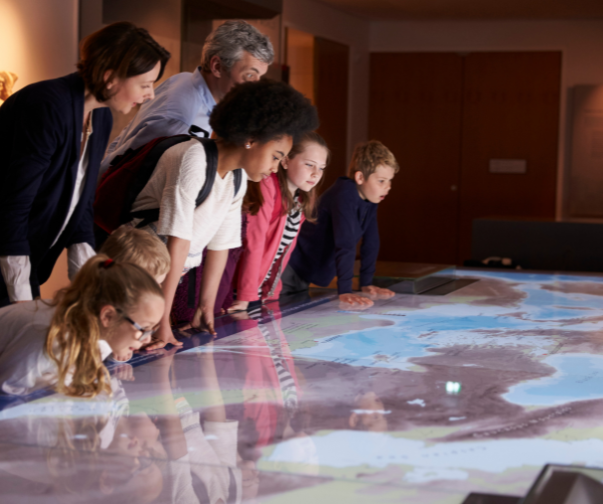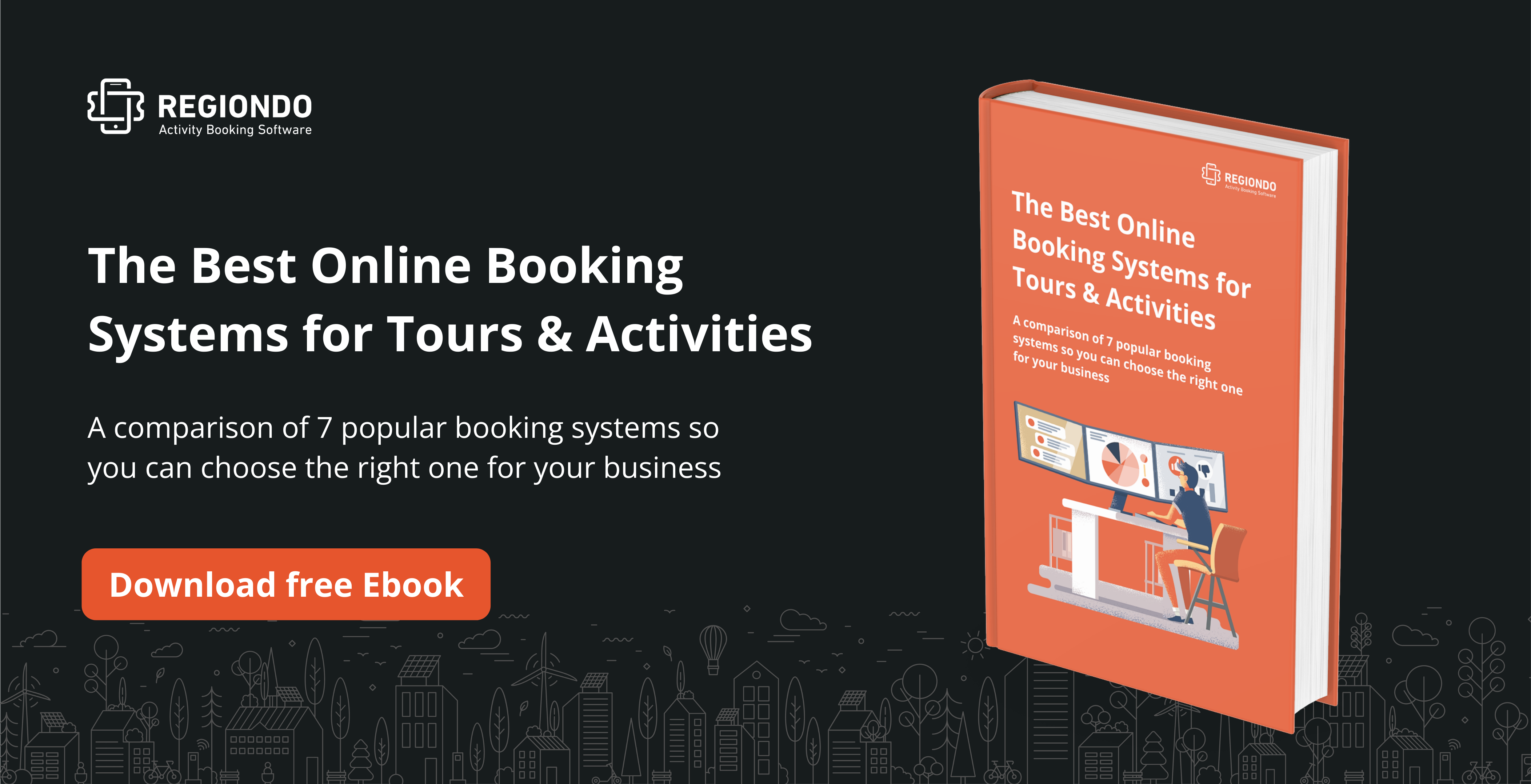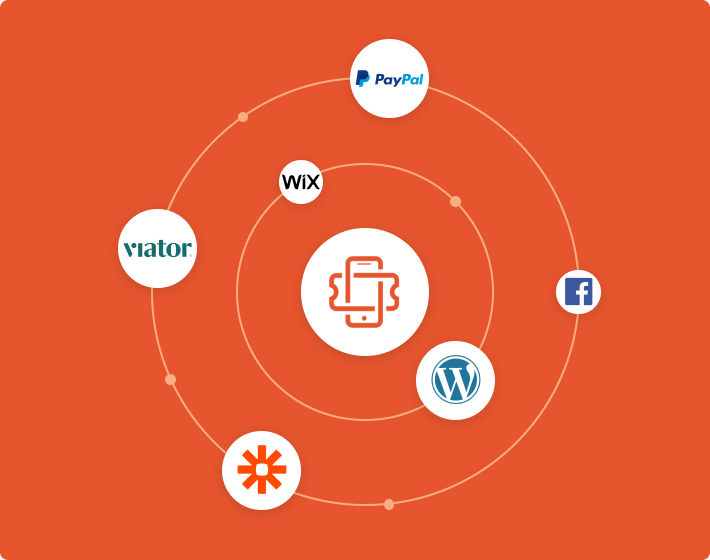Did you know that there were 4.88 billion active internet users as of October 2021, up from 4.66 billion in January 2021?
That’s a staggering 62% of the global population and the numbers will only increase in months and years to come.
So, how can museums benefit from this trend and attract more visitors using online channels? This is what we’ll cover today.
Benefits of Using Digital Marketing For Your Museum
Digital marketing (often called “online marketing”) relies on digital communication channels such as online ads, social media and email to reach customers. We will go into greater detail about these channels later. But first, what do you stand to gain by investing in digital marketing as a museum manager? Let’s take a look.
1. Reach a More Targeted Audience
Unlike traditional media ads that give you limited control over who views your messages, digital marketing enables you to target specific audiences based on your business goals and the research you’ve carried out.
You can choose to reach an audience based on age, location, interest, and gender. Zoning in on a targeted audience helps your message reach the most relevant people and this is bound to increase conversion rates.
2. Build a Stronger Relationship With Your Visitors
Digital marketing creates a more personalized experience between you and your potential visitors. Whether through emails, social media posts, or web content, you can conveniently converse with them and boost engagement – on the platforms they actually use.
3. Measurable Marketing
By using digital marketing for your museum, it’s easy to see real-time metrics using tools like Google Analytics. You can track how much traffic, leads and customers you get to inform your future decisions – something that’s not as easy with traditional advertising channels.
4. It’s Cost-Effective
According to DemandMetric, content marketing (a major part of digital marketing) costs 62% less than traditional marketing. What’s more, content marketing allows businesses to get up to three times more leads than traditional media.
Also, since you can evaluate what channels outperform others in real-time using analytics, it’s convenient to switch and invest in methods that work, allowing you to get the most out of every campaign.
5. Levels the Playing Field
With proper strategies in place, even smaller museums do not have to spend an arm and a leg to attract visitors. Online channels allow you to compete against more established brands that have lots of money to spare for marketing.
Now that you understand why digital marketing is useful for museums, let us look at seven ways you can leverage it to attract more visitors.
7 Tips To Attract Museum Visitors Using Digital Marketing
Getting more visitors to walk through your museum doors or engage with your brand online requires using more than one digital marketing method. Here are some ways you can use digital marketing to boost your ticket sales:
1. Boost Website Traffic Through Search Engine Optimization (SEO)
To increase the organic traffic to your museum’s website pages, your website must rank on the first page of Google (or any other search engine for that matter) since 95% of searchers do not bother with anything past this page.
This is why you need to work on SEO.
Search Engine Optimization (SEO) is the process of improving your website so that it can rank organically on Search Engine Results Pages (SERPs). SEO boosts web traffic by placing your museum’s website in front of the many eyeballs of potential customers.
Google’s algorithms for ranking your website are constantly changing. However, optimizing the following will help you get on the first page.
Quality Content
Well-crafted content that is engaging and relevant to your potential visitors is the backbone of any SEO campaign. Content is the reason why people use search engines in the first place as they look for information, products and services online. But how do you know what content to create?
Use of Keywords
Your potential museum visitors use specific keywords when researching a trip or a family activity for the weekend. Knowing these will help you generate content ideas and optimise your website to rank higher when people in your area search for them. If you want to get started, we created a more detailed guide to help you with keyword research.
Fast Page-Loading Speeds
According to Portent, pages that load in under 5 seconds have the highest conversion rates. In addition, conversion rates drop by an average of 4.42% for each additional second of load time between 0 and 5 seconds.

Visitors who visit your site should have the best experience possible. They should navigate and have pages load with ease on all electronic devices, including mobile phones and tablets.
Websites with slow loading speeds are likely to lose traffic as search engines de-prioritise them in favour of faster competitors.
Business Listing on Google
You can also use your Google My Business (GMB) listing to help rank your museum based on your location. When someone searches for museums within your area, yours can pop up on the map and lead to more people visiting your museum.
If you haven’t already, creating your Google My Business listing is absolutely free of charge. All you need is to sign up and fill in all the necessary details about your business, including contact information, opening and closing times, etc. Having user reviews in this space can work wonders in convincing others to check out your site and ultimately visit your museum.
Quality Backlinks
Building quality backlinks is another way of ranking your website on SERPs. Backlinks are links from other websites that point to your pages as a reference. They also act as proof of your site’s credibility and show that your website content is valuable to readers. Just as more cited academics are seen as more influential, search engines rely on backlinks as proof of authority. Therefore, the more quality backlinks you build, the more likely your museum website is to rank and gain more traffic.
2. Grow Your Museum’s Influence Through Blogging
Blogging is one of the content marketing strategies you can use to grow your museum’s influence online and boost sales. It involves writing and publishing articles on your website that inform and engage potential visitors.
To get started, think about the audience you want to attract and cover topics that tie in with their interest and your museum as a business. This works hand-in-hand with the keyword research we mentioned earlier so you know you’re blogging about relevant topics.
3. Generate Leads Through Targeted PPC Advertising
Pay-per-click (PPC) advertising is another digital marketing strategy you can use for your museum. It involves paying for advertising space at the top of search results. You only pay when someone clicks on your ad so it practically guarantees you will get attention in exchange for your spend.
What’s even more beneficial about PPC advertising is the fact that it targets the most relevant leads e.g. people looking to visit a museum or similar activity in your region.
Research shows that 78% of companies use Google Ads for PPC advertising. However, you can also use social media platforms like Twitter and Facebook to advertise.
To make the most of this strategy, create relevant and enticing content where your PPC ads will lead to – think beyond your home page and towards interesting offers like family tickets, school packages and other products you have.
4. Nurture Leads With Email Marketing
Did you know that email marketing has the highest return on investment of all marketing channels? For every one dollar spent, you can expect an average return of $44 so this is why you need to consider this digital marketing channel for your museum.

Email marketing begins by getting subscribers. When someone subscribes/ signs up to receive your content or newsletter, this is a chance to start engaging them and enticing them to visit your museum proactively.
Here are some of the aspects you can include for your museum’s email marketing:
- Personalized emails. Emails with personalized subject titles (e.g. including the person’s name) have a 26% chance of being opened and have six times higher transaction rates than other channels.
- Segmented emails. Consumers can get frustrated or put off by content that’s irrelevant to them, leading them to unsubscribe. Avoid this by segmenting your audience and sending different emails to different audiences groups.
- Triggered emails. These are emails sent to subscribers based on their online activities. For example, you can send a welcome email to a new subscriber or a follow-up email to a customer who abandoned their cart before completing their purchase. You can even send a thank you note for attending an event held at your museum.
- Email offers. Most people love to get discounts or special offers and sending such offers through emails is an excellent idea. These emails can boost the number of subscribers, increase your brand awareness, and, eventually, entice your audience to visit your museum.
5. Leverage Video Marketing
Using video marketing for your museum can not only boost traffic but also educate and entertain audiences. Users spend more time on pages with videos meaning you need to create authentic, diverse, and engaging videos to keep viewers glued to your site or YouTube channel.
As a museum, think of how to creatively structure the video content. You can interview museum visitors or your employees, give a sneak peek of your museum, or include a behind-the-scenes film about a recent event.
The videos can vary in length based on the topics and target audiences.
6. Increase Engagement Through Social Media Marketing
Identify the different social media platforms where you can reach your target audiences. If you are targeting millennials, then platforms such as Instagram or TikTok may be ideal. Whereas content for an older audience may do well on Facebook or Twitter.
Ensure that your social media posts are interactive and sharable to create viral posts that increase traffic and make new viewers aware of your museum brand.
Social media is an ideal place to interact with your potential customers as it offers a relaxed environment where people can open up and share their likes and dislikes. You can use these opportunities to learn more about your audience and even make them more interested in your museum.
7. Monitor Progress Using Analytics
Monitoring the performance of your social media marketing, website, blog, and paid ads will help you determine where you get the most engagement and conversions and where you don’t. It will also help you gain a better understanding of how your audience behaves.
This data can help you improve your digital marketing strategy for your museum. The key here is to understand what all the data collected means to effectively improve performance across all marketing platforms.
Conclusion
There you have it – to attract museum visitors through digital marketing, the following are some of the most effective tips you can begin implementing:
- Boost website traffic through search engine optimization (SEO)
- Grow your museum’s influence through blogging
- Generate leads through targeted PPC advertising
- Nurture leads with email marketing
- Leverage video marketing
- Increase engagement through social media marketing
- Monitor progress using analytics
Did you know that a dedicated online booking system for museums like Regiondo can help you make the most of digital channels and massively reduce your admin workload? Check out our detailed guide on the best online booking systems below to learn how your museum can take advantage.




